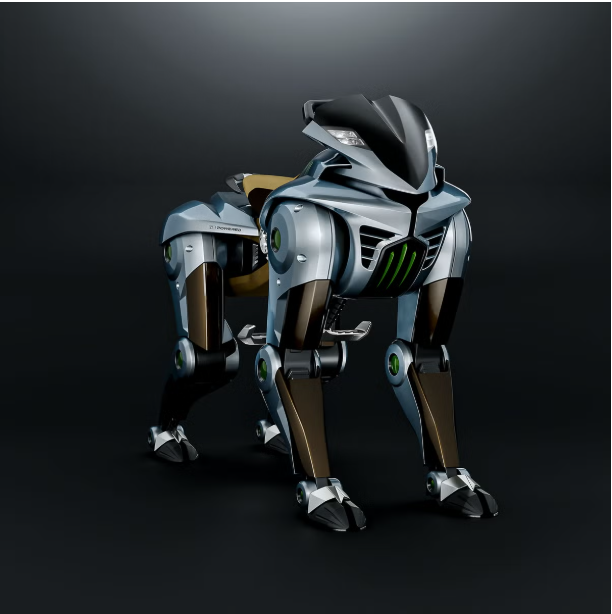The Weaponization of Awe
Why the Kawasaki “Horse Motorcycle” is Not a Motorcycle—And Why That Matters
In a recent article by Popular Mechanics, the media presents a quadrupedal robotic vehicle—developed by Kawasaki Heavy Industries (KHI)—as a so-called “motorcycle” inspired by horses. The problem begins in the headline and continues through the entire piece. This is not a motorcycle. It never was. No human in history, observing a walking quadruped robot, would confuse it for a motorcycle. So why does the media keep calling it one?
Because breaking form earns clicks.
Because the goal is applause, not clarity.
Because journalism today often functions as thinly veiled PR.
This phenomenon deserves scrutiny.
1. Breaking Form to Break Thought
The essence of “form” in Eidoist terms is functionality in alignment with essence. A motorcycle is a vehicle optimized for individual transport on roads using wheels. The Kawasaki robot is a walking machine for extreme terrains, likely optimized for stability, payload, and balance in chaotic or undeveloped environments. It defies the form of a motorcycle in every conceivable way—except in the imaginary hype narrative built by Popular Mechanics.
Calling it a “motorcycle” is not just an error—it is propaganda masquerading as curiosity.
When the media breaks form so deliberately, they are no longer serving the role of informing the public but of manipulating perception. The goal is no longer to describe a technological development but to elevate it into a spectacle, hoping that wonder and confusion will generate virality. The reader is treated not as an intelligent subject but as a dopamine-driven consumer of visual oddities.
2. Media as Influencer and Lobbyist
Let us not pretend that Popular Mechanics is operating independently. Kawasaki Heavy Industries is not just a motorcycle brand—it’s a massive conglomerate with deep involvement in aerospace, robotics, energy systems, and military contracting. The media, by giving space and celebration to a project that serves no civil purpose, becomes a passive amplifier of military-industrial PR.
This robot is not meant for your commute.
It is not designed to ride through the countryside, wind in your hair, embracing the joy of motion.
It is a proof-of-concept for mobility in warfare: a quadruped that can traverse terrain where wheels fail, carry equipment, and potentially mount weapons.
The media never mentions this. They prefer to imply that we are on the verge of some techno-renaissance in recreational mobility. But no one will register such a vehicle for the road. No one will enjoy “riding” it in nature while it mechanically clanks and calculates its gait. The military, however, will quietly observe how useful this creature could be when deployed into real-world logistics or combat.
And while this unfolds, the media keeps the population distracted with absurd headlines and likable videos.
3. The Real Purpose of the Article
This article is not about engineering. It is not about design. It is certainly not about mobility.
It is about preparing the public for the aesthetic of robotic militarization.
First, make the robot seem fun.
Make it look like a horse.
Show it in a demo room with techs smiling and gently patting it.
Let people imagine it as a cute sci-fi toy.
Then, when it shows up in a defense expo with mounted gear and autonomous pathfinding, no one will resist.
The narrative groundwork has already been laid: this thing was just an innovation.
Just progress.
Just a “motorcycle.”
Conclusion: The Lie of Formless Media
Media is not dumb. But it pretends you are.
By presenting technological experiments as consumer gadgets, they erase the line between military development and civil innovation. They betray form for attention. They hijack your perception with applause instead of explanation.
But this is not a motorcycle.
And this is not journalism.
This is marketing for machines of control.
Reference: https://www.popularmechanics.com/cars/motorcycles/a64702753/horse-motorcycle/


